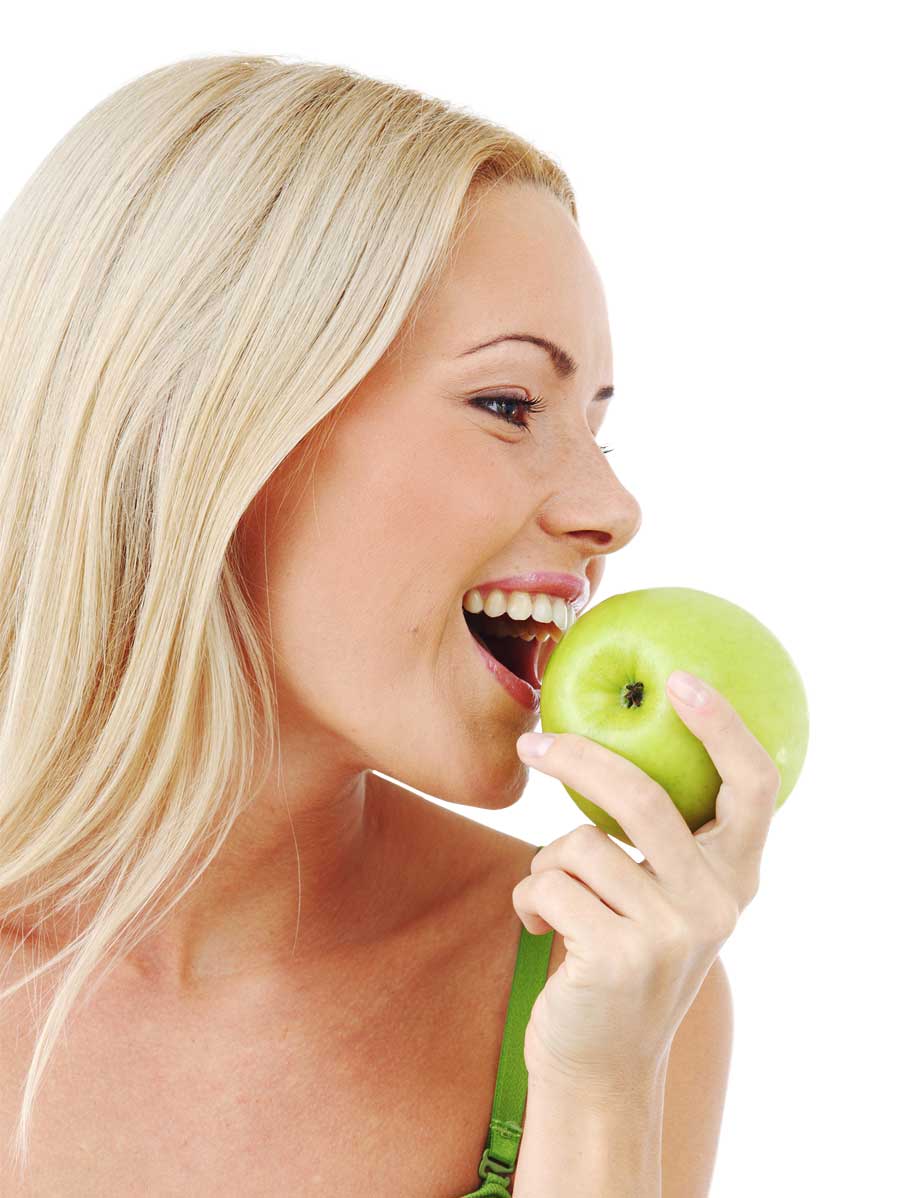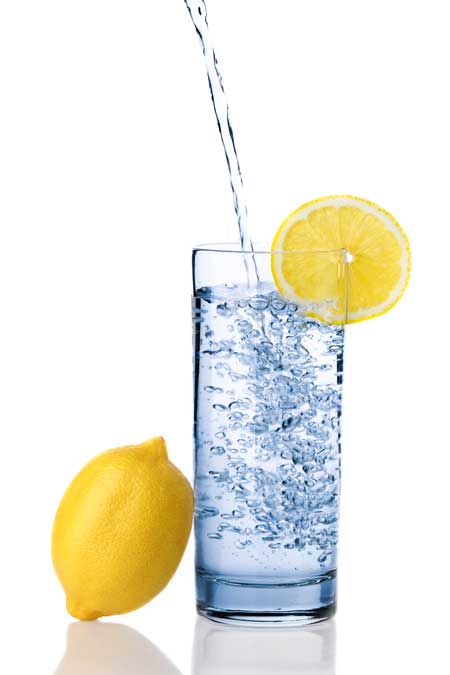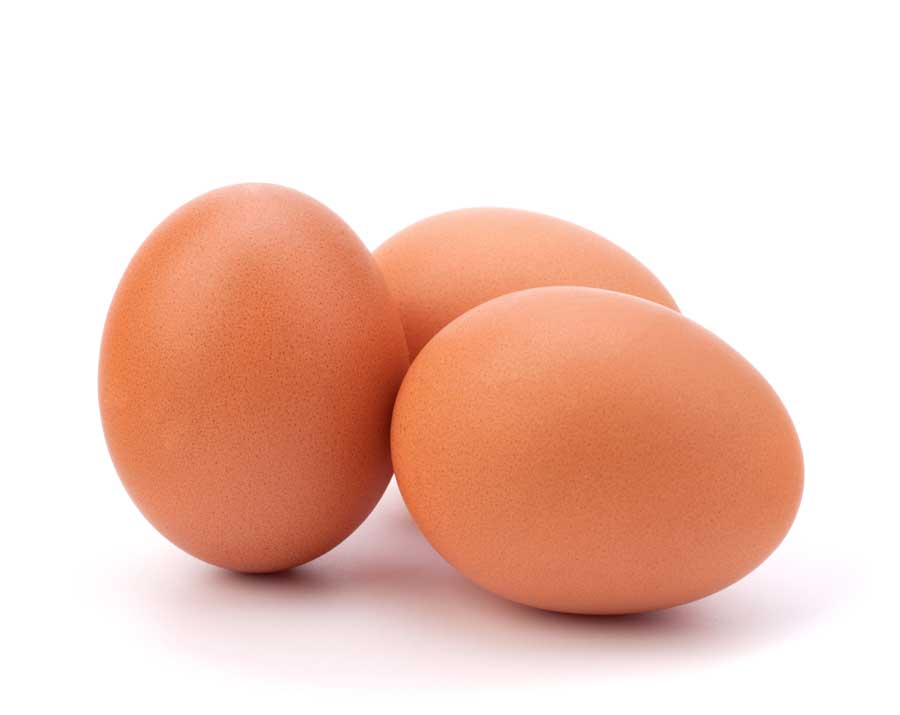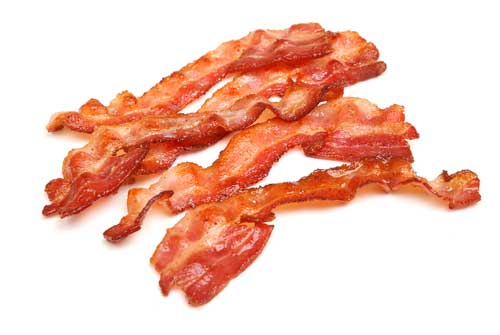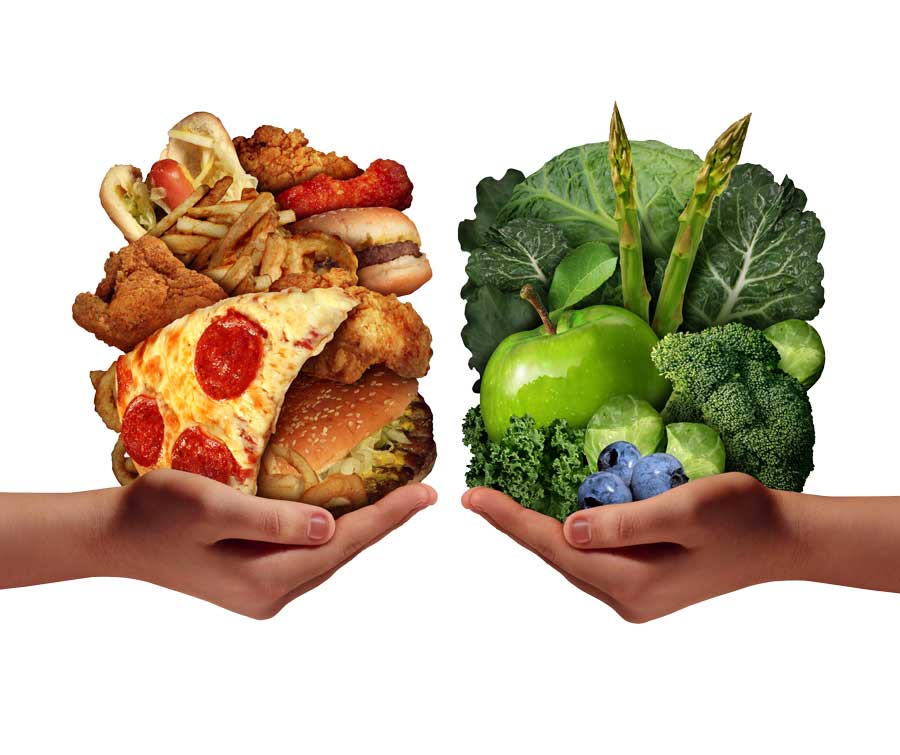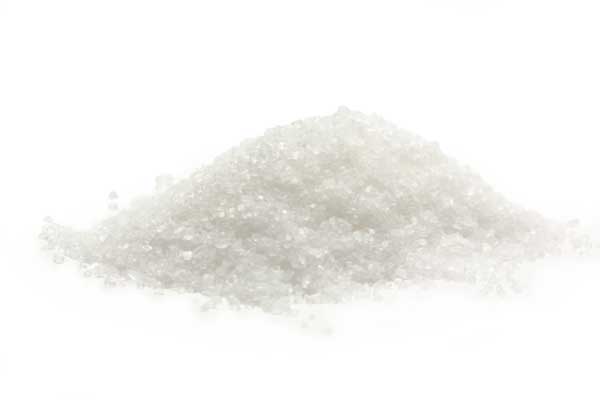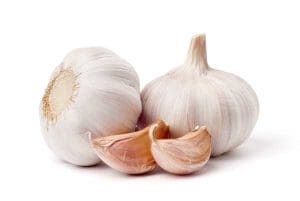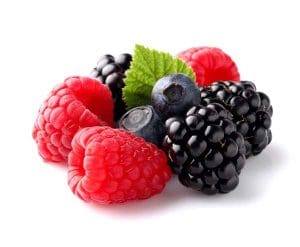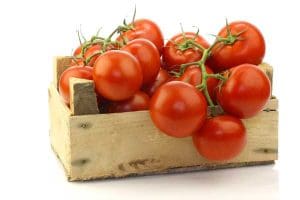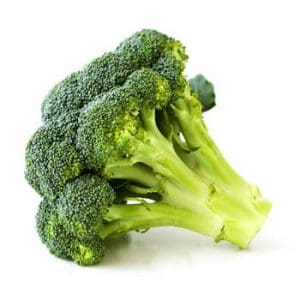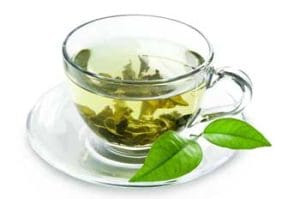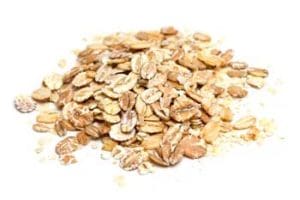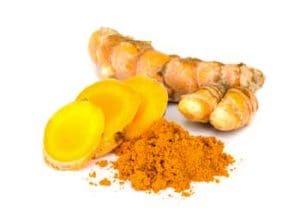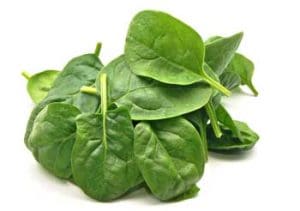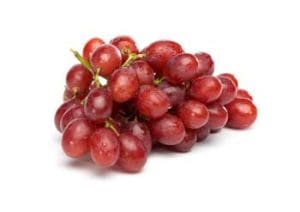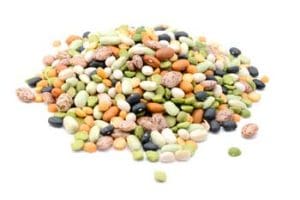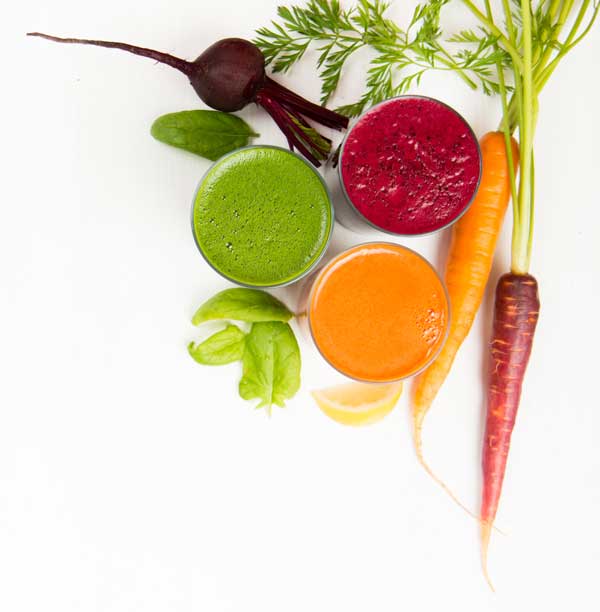You are what you eat!
WRITERS: James Combs+Shemir Wiles
What’s on Healthy Living’s menu this month? We’re serving up some important nutritional information for you to chew on.
Your diet affects both your body and mind. It plays an instrumental role in how you look physically and how you feel mentally. Fact is, you can spend five minutes with someone and determine if he or she is receiving proper nutrition just by assessing the body and determining the mood.
Eating isn’t about fulfilling our appetites in the moment; it’s about sustaining a healthy life.
Why?
Simple. Nutrition benefits our health on a cellular level. The human body has trillions of cells, which form body tissue and make up the organs, such as the heart, liver and lungs.
Without proper nutrition, cells cannot operate efficiently and the functions of tissues and organs become compromised. That can result in disease. Conversely, when you feed your cells proper nutrients, you help your entire body function optimally.
January is when many people begin an important journey to a healthier lifestyle. Since nutrition is undoubtedly the most important component to healthy living, we’re offering some assistance.
This comprehensive nutrition guide is full of tasty tidbits, flavorful facts and succulent statistics to help you make wiser food choices. It offers the perfect recipe for a happier, healthier life.
Bon appétit.
Water
Water is unquestionably the most important nutrient we can give our bodies. A human can last weeks without food, but only five to seven days without water. The roles of water in the human body are endless. For starters, it washes away dirt and grime in our eyes, keeps our joints lubricated, helps regulate temperature and maintains electrolyte balance.
[row] [column lg=”4″ md=”12″ sm=”12″ xs=”12″ ]
 [/column]
[column lg=”8″ md=”12″ sm=”12″ xs=”12″ ]
[/column]
[column lg=”8″ md=”12″ sm=”12″ xs=”12″ ]
WHAT’S ON TAP?
Spring water
The name evokes images of water rushing off a snow-capped mountain. But that’s misleading. According to the Natural Resources Defense Council, spring water contains contaminants such as coliform, arsenic and phthalates. Often, bottled water is labeled as spring water but is really coming from a municipal source and does not have the highest levels of purity.
Purified water
Again, the name is misleading. Purified water contains no minerals and is also an active absorber of carbon dioxide when it comes into contact with air. That makes the water very acidic. Organs, tissues and cells do not like being dipped in acid.
Distilled water
This water goes through a rigorous distillation process that includes boiling the water, capturing the steam and condensing it back into water. There are no bacteria, additives or contaminants. As a result, distilled water comes the closest to the definition of pure drinking water.[/column]
[/row]
[row] [column lg=”4″ md=”12″ sm=”12″ xs=”12″ ] MANY PEOPLE DRINK distilled water for detoxification and fasting programs. This type of water is excellent for cleaning all the body’s cells, organs and fluids. It also eliminates many harmful substances.
Source: ecclesia.org/truth/water.html
[/column] [column lg=”4″ md=”12″ sm=”12″ xs=”12″ ] YOUR BODY BY THE DROP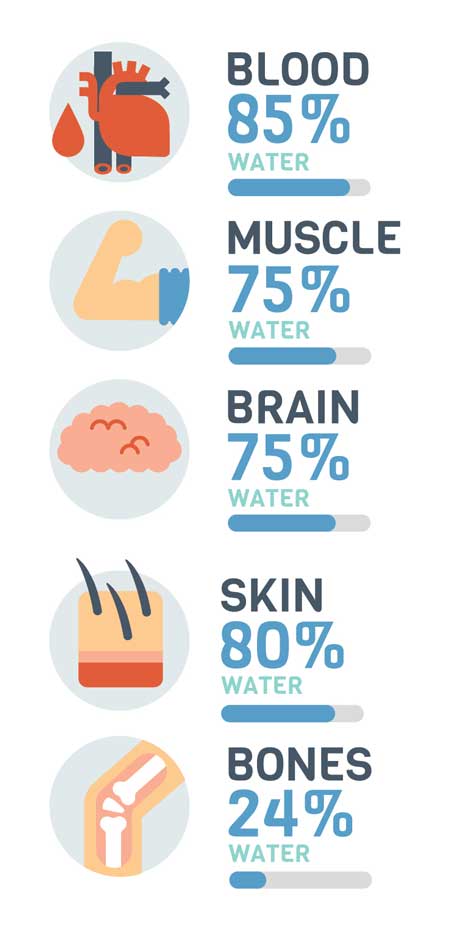 [/column]
[column lg=”4″ md=”12″ sm=”12″ xs=”12″ ]
DID YOU KNOW?
[/column]
[column lg=”4″ md=”12″ sm=”12″ xs=”12″ ]
DID YOU KNOW? According to the website ecohealthwellness.com, fasting with purified water “can cause rapid loss of electrolytes and trace minerals like magnesium. Deficiencies of these minerals can cause irregular heartbeat and high blood pressure.” [/column] [/row]
 Pure Sweetness
Pure Sweetness
When life hands you a bunch of lemons, make lemonade. When life hands you health issues, drink lemon water. You are likely unaware of the following health benefits that lemon water offers.
• Lemons contain vitamin C, which helps boost your immune system.
• Lemons also contain potassium, which helps the heart, brain and nerves achieve optimal function.
• Lemons loosen toxins in your digestive tract, relieving symptoms of heartburn, burping and bloating.
• Lemons flush out toxins in your body, thus stimulating the liver.
• Lemons contain antioxidants that decrease wrinkles and blemishes on the skin.
• Lemons contain pectin fiber, which reduce hunger cravings.
[notification type=”alert-warning” close=”false” ]How much lemon should I use?People less than 150 pounds: Squeeze half a lemon into a glass of water.
More than 150 pounds: Squeeze an entire lemon into a glass of water.
Source: lifehack.org/articles/lifestyle/11-benefits-lemon-water-you-didnt-know-about.html
[/notification]KNOW YOUR LIMITS
[notification type=”alert-info” close=”false” ]“Consumption of large amounts of water very quickly (for example, 13 cups in four hours, as some marathon runners have done) can result in a state of hyper hydration that can actually be dangerous to a person’s health and can even result in death.”
— ANNA GUNTER, outpatient dietitian at Florida Hospital Waterman
[/notification][notification type=”alert-danger” close=”false” ]
“Hydrate, hydrate, hydrate! Get headaches? Water can prevent and alleviate headaches as well as joint or back pain. With any symptom or ailment, the first thing to try is drinking more water; you might be surprised! Water is absolutely essential to our body’s survival. It leads to better health by flushing out toxins that can cause diseases. We should be drinking at least half our body weight in ounces of water.”
— JAIME ALONZO, a health coach at Total Nutrition and Therapeutics, talks about the importance of water.
[/notification]Protein
There are three types of nutrients that serve as essential energy sources in the human body: proteins, carbohydrates and fats.
Proteins are large molecules that consist of amino acids, which help the cells in our body function properly. Protein is the body’s building block, and all of our organs — as well as muscles, bone, skin, hair and nails — are built from proteins. The immune system, digestive system and blood all need protein for optimal function. The body generally does not store protein, making it an essential part of our diet.
Make an Egg-cellent decision
Of all food, including beef, protein in eggs has the highest biological value, a measure of how well it supports your body’s protein needs.
[row] [column lg=”6″ md=”12″ sm=”12″ xs=”12″ ] Best way to cook an egg:Soft-boiled, because the fats and nutrients in the yolk have three protective layers from oxidation — the water, eggshell and egg white. Thus, all the healthy vitamins and minerals — including vitamins A, B12, riboflavin and iron — are preserved.[/column] [column lg=”6″ md=”12″ sm=”12″ xs=”12″ ] Worst way to cook an egg:
Scrambled, because the fats and proteins are being chopped into tiny particles and being directly exposed to heat and oxygenation. Fats in conventional eggs are already pro-inflammatory and do not need additional oxidation.[/column] [/row]
Source: thepaleofix.com/7-ways-how-to-cook-eggs/
“Life expectancy would grow by leaps and bounds if green vegetables smelled as good as bacon.”
— DOUG LARSON
Protein: GOOD VS.BAD
[row] [column lg=”6″ md=”12″ sm=”12″ xs=”12″ ] • Organic chicken and eggs.• Antibiotic-free and hormone-free meat from grass-fed, free-range livestock.
• Unpasteurized, raw dairy products.
• Wild, mercury-free fish.
• Sprouted nuts and seeds.
• Plant sources such as organic beans and whole grains.
[/column] [column lg=”6″ md=”12″ sm=”12″ xs=”12″ ] • Meat from livestock injected with hormones and antibiotics and provided unhealthy, unnatural feed.• Poultry from caged chickens that are not allowed to eat a natural diet or roam freely.
• Farm-raised fish that are fed unnatural land-based diets contain little omega-3 essential fatty acids.[/column] [/row]
[notification type=”alert-danger” close=”false” ]Where’s the beef?
We all know meat contains high amounts of proteins, but where do vegetarians get their protein sources? Here are 10 of the best meatless high protein foods. [row] [column lg=”6″ md=”12″ sm=”12″ xs=”12″ ] eggs: 6 grams per egg
cottage cheese: 13 grams per ½ cup
quinoa: 8 grams per cup
pumpkin seeds: 7 grams per oz.
dried beans: 12 grams per cup[/column] [column lg=”6″ md=”12″ sm=”12″ xs=”12″ ] soy milk: 8 grams per cup
Greek yogurt: 15 grams per 6 oz.
peanut butter: 8 grams per 2 Tbs.
seitan: 18 grams per 3 oz.
almonds: 6 grams per oz.[/column] [/row]
Source: cookinglight.com/food/vegetarian/protein-for-vegetarians/almonds
[/notification]Carbohydrates
Carbohydrates are organic compounds that contain sugars. Your body breaks down carbohydrates you eat to produce glucose and give you energy. Despite the increasingly popular perception carbs are evil, the reality is they provide fuel that keeps your body moving, much like gasoline powers a car.
2 Types of Carbs
You have simple carbohydrates and complex carbohydrates. Simple carbohydrates, which are typically absorbed faster in the body, are found in fruits, vegetables and milk products, as well as processed foods like candy, cookies and soda. Complex carbohydrates include starches and fiber and must be digested before being used as energy.
Source: fitday.com/fitness-articles/nutrition/calories/what-are-carbs-how-they-work-and-how-to-get-them-to-work-for-you.html#b
[notification type=”alert-info” close=”false” ]
“Low-carbohydrate diets might seem the logical approach to lowering blood sugar in people with diabetes. However, foods that contain carbohydrates are important sources of energy, fiber, vitamins and minerals. Therefore foods that contain carbohydrate are important components of the diet for individuals with diabetes. According to the American Diabetes Association, a dietary pattern that includes carbohydrate from fruits, vegetables, whole grains, legumes and low-fat milk is encouraged for good health.”
— Anna Gunter
[/notification]Choose your carbs carefully
Refined carbs are those full of sugar and stripped of all nutrients. White bread, biscuits and candies are perfect examples. What makes them unhealthy is that they pack plenty of calories but lack nutrients such as vitamins, minerals and fibers. When consuming refined carbs, you are absorbing sugar straight into your bloodstream, which raises your blood-sugar level.
Unrefined carbs, such as vegetables and fruits, contain lots of nutrients like antioxidants, minerals, vitamins and fiber — all necessary to help our body achieve optimal function. These nutrients also help fight inflammation and improve our digestive system, heart and bone health.
Carbs: GOOD VS.BAD
[row] [column lg=”6″ md=”12″ sm=”12″ xs=”12″ ] • Whole wheat pasta• Barley
• Fruits and vegetables
• Low-fat dairy products
• Legumes such as beans, soybeans, peas and lentils.
• Whole grains[/column] [column lg=”6″ md=”12″ sm=”12″ xs=”12″ ] • Soda
• Candy
• Artificial syrups
• Sugar
• White rice, white bread and white pasta
• Potatoes
• Pastries and desserts[/column] [/row]
[notification type=”alert-success” close=”false” ]
“Choose healthy carbs that are high in fiber and are digested slowly. Good carbs are whole foods — foods that spoil, rot and don’t have a nutrition label (in other words, made from nature). Bad carbs are manmade or made in a factory and lead to many more health problems.”
— Jaime Alonzo
[/notification]Find your Thrill on Blueberry Hill
If you’re looking for a gluten-free way to satisfy your carb craving, consider the following recipe for blueberry coffee cake.
Ingredients:
2 cups The Pure Pantry Organic All-Purpose Baking Mix
½ teaspoon sea salt
½ teaspoon nutmeg
½ cup coconut oil or butter
½ c. brown sugar or coconut sugar
3 large eggs, beaten, or egg replacer
½ cup sour cream or sour cream substitute
3 tablespoons milk of choice (rice, almond or regular)
1 teaspoon lemon zest
2 teaspoons vanilla extract
1½ cups organic blueberries, preferably fresh but frozen can be substituted if defrosted and drained
Crumb Topping:
¾ cup The Pure Pantry Organic All-Purpose Baking Mix
1/3 cup coconut oil or butter
1 tablespoon brown sugar or coconut sugar
Instructions:
Preheat oven to 350 degrees.
Combine baking mix, salt and nutmeg in large mixing bowl.
In a medium mixing bowl, beat coconut oil (or butter). Add brown sugar (or coconut sugar) and cream together. Add eggs one at a time, blending after each addition. With mixer on low, add sour cream (or non-dairy substitute), milk, vanilla and lemon zest.
Gently fold in blueberries with spoon. Pour into greased Bundt pan or 9 x 11 inch baking dish.
Prepare crumb topping by blending coconut oil (or butter) with baking mix and sugar until mixture resembles pea-sized crumbs. Sprinkle crumb mixture on top of cake.
Bake for 30 minutes or until tester comes out clean. Cool before serving.
Source: thepurepantry.com/blogging/the-thrill-of-blueberries/
Fats
While most probably think of fat as the bane of human existence (especially if your clothes aren’t quite fitting anymore), it actually is a nutrient that is crucial for body function. Fat gives us energy and helps our body absorb certain vitamins, such as A, D, E and K. However, the key to consuming fat is knowing which ones are good for us and which ones are toxic.
Fat isn’t always a bad thing.
The following foods are a great source for fats that are healthy, not harmful:[row]
[column lg=”3″ md=”12″ sm=”12″ xs=”12″ ]
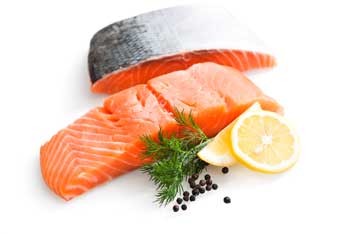
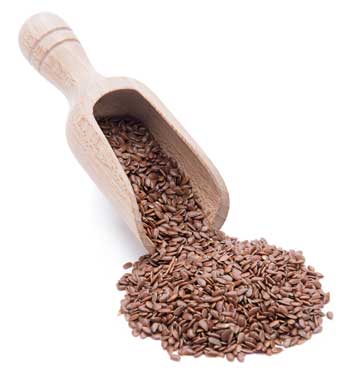
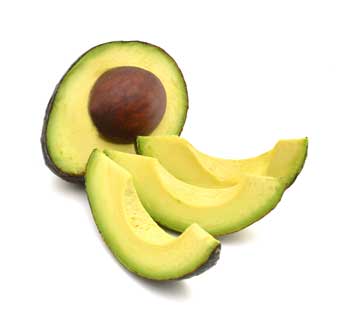
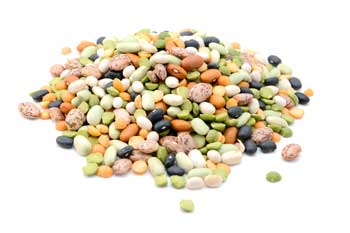
Sodium & Salt
These are undoubtedly two dirty words in the world of nutrition … and for good reason. Increased amounts of either in the body can lead to adverse health effects. That said, they’re not all bad. Sodium, for example, is important to maintain normal muscle and nerve function. Likewise, salt helps retain water in the body, stimulates muscle contraction and aids in digestion and absorption.
Sodium by The Numbers
[row] [column lg=”4″ md=”12″ sm=”12″ xs=”12″ ]3,400
in milligrams, the amount of sodium the average American eats daily.
[/column] [column lg=”4″ md=”12″ sm=”12″ xs=”12″ ]1,500
in milligrams, the American Heart Association’s recommended amount of daily sodium intake.
[/column] [column lg=”4″ md=”12″ sm=”12″ xs=”12″ ]77.9
in millions, the number of American adults with high blood pressure, a side effect of high sodium intake.
[/column] [/row]Source: American Heart Association
Not worth one’s salt
Nine of 10 Americans consume too much sodium, according to the Centers for Disease Control and Prevention. High sodium levels can lead to:[row]
[column lg=”6″ md=”12″ sm=”12″ xs=”12″ ]
• High blood pressure
• Heart failure
• Osteoporosis
• Kidney stones and renal failure[/column]
[column lg=”6″ md=”12″ sm=”12″ xs=”12″ ]
• Dehydration
• Breathing failure
• Gastric ulcers
• Electrolyte and hormonal imbalance[/column]
[/row]
Salt of the earth
If you simply cannot eat a meal without salt, you should at least understand the differences between various kinds of salt.
[row] [column lg=”4″ md=”12″ sm=”12″ xs=”12″ ]Table:
Because it is heavily ground, most of the impurities and trace minerals in table salt are removed. Sodium chloride makes up 97 percent of table salt. Iodine is often added to table salt, which is important because iodine deficiency is a leading cause of hypothyroidism throughout the world.[/column]
[column lg=”4″ md=”12″ sm=”12″ xs=”12″ ]
Sea:
Sea salt is made by evaporating seawater and contains trace minerals such as potassium, iron and zinc. Unfortunately, it also contains trace amounts of heavy metals such as lead due to the pollution of oceans. The darker the sea salt, the more chance of it having a higher concentration of impurities.[/column]
[column lg=”4″ md=”12″ sm=”12″ xs=”12″ ]
Kosher:
Originally used for religious purposes, Kosher salt has a large, flaky, coarse structure that is easier to pinch and measure with your fingers. It is less processed and therefore contains fewer additives such as anti-caking agents and iodine. In addition, Kosher salt is less salty than table salt.[/column] [/row]
 Healthy Himalayan
Healthy Himalayan
Pure Himalayan salt is harvested from Pakistan’s Khewra Salt Mine, the second largest salt mine in the world. It contains more than 80 essential minerals — including calcium, iron, potassium and magnesium — and has lower amounts of sodium than regular salt. There are no contaminants.
Himalayan salt has numerous health benefits. It improves your body’s pH balance, helps your body maintain intracellular water levels, improves nervous system function, enhances nutrient absorption and minimizes fluid retention.
Source: authoritynutrition.com/different-types-of-salt/; healthambition.com/healthiest-type-of-salt/
Fighting the big ‘C’
Taking preventive measures is the best way to fight cancer. Fortunately, the battle can be waged through nutrition. Here are 10 of the top cancer food fighters.
Garlic
Large studies have revealed that those who eat garlic regularly are less likely to develop esophagus, stomach and colon cancer.
Berries
Blueberries, strawberries and blackberries contain powerful antioxidants that can halt bodily processes that create free radicals which damage your cells.
Tomatoes
Research has indicated tomatoes can reduce a man’s chance of getting prostate cancer. Tomatoes contain a high amount of lycopene, a powerful antioxidant.
 Cruciferous vegetables
Cruciferous vegetables
Broccoli, cabbage and cauliflower are believed to help shield people
from cancer-causing chemicals, slow the growth of tumors and even
encourage cancer cells to die.
 Green tea
Green tea
This drink contains catechins, a group of antioxidants that have been found to shrink tumors and reduce tumor cell growth in lab studies.
 Whole grains
Whole grains
Oatmeal, barley, brown rice and whole-wheat bread contain lots of fiber and antioxidants. A large study of 500,000 people found that eating more whole grains may lower the risk of colorectal cancer.
 Tumeric
Tumeric
This orange-colored spice contains an ingredient called curcumin, which has been found in lab studies to inhibit certain kinds of cancer cells. It has also shrunk tumors in some animals.
 Leafy green veggies
Leafy green veggies
Spinach, collard greens, lettuce and mustard greens contain a good amount of the antioxidants beta-carotene and lutein. These green vegetables may limit the growth of some kinds of cancer cells, according to the American Institute for Cancer Research.
 Grapes
Grapes
The skin on red grapes is a rich source of an antioxidant called resveratrol, which the National Cancer Institute says may be useful in keeping cancer from occurring or spreading.
 Beans
Beans
Pinto and kidney beans contain antioxidants and fiber. The American Cancer Society says eating a high-fiber diet can help reduce risk of cancer.
Source: everydayhealth.com/cancer-photos/top-foods-to-fight-cancer.aspx#09
Fishing for better health
Don’t wade through murky waters trying to figure out what types of fish are the healthiest. We’ve already reeled in the answer.
Wild salmon: This fish is high in omega-3 fatty acids, ranging from 750 milligrams to 1,270 milligrams per serving. Salmon is also a good source of vitamin D.
Farmed rainbow trout: You’ll take in 866 milligrams of omega-3 fatty acids per a 75-gram serving. It is high in vitamin B12, which aids in heart health and nerve function.
Atlantic mackerel: This is packed with omega-3 fatty acids — 982 milligrams per a 75-gram serving. This is another fish high in vitamin B12 (six times the recommended daily value). Word of caution: Beware of pickled or smoked mackerel due to the high sodium content.
Albacore tuna: Albacore tuna that are troll- or pole-caught in the United States or British Columbia are typically smaller and have less mercury and contaminant ratings than other kinds of tuna. You need to research to find out how your fish was caught, or you can look for the Marine Stewardship Council blue eco label.
Farmed oysters: They contain 300 milligrams of omega-3 fatty acids per a 3-ounce serving and contain about one-third of the recommended daily value of iron.
Sources: besthealthmag.ca/eat-well/healthy-eating/the-best-fish-to-eat?slide=6; eatingwell.com/blogs/health_blog/6_of_the_healthiest_fish_to_eat_and_6_to_avoid
Superfood status
Everyone knows it’s important to eat well, but is it possible some foods could be more healthful than others? These powerhouse ingredients are more commonly known as superfoods. They pack a wallop when it comes to nutrition and giving your body a boost. While most have heard of the benefits of common superfoods like salmon and blueberries, there are lesser-known superfoods that should also be on your radar. Here’s just a few to consider:
Seaweed
Forget veggies that grow on land, sea-grown vegetables like seaweed are packed full of minerals. In fact, some types of seaweed have more iron than beef and more calcium than cheese.
Furthermore, seaweed is said to possess healing properties, which include lowering cholesterol, reducing water retention and promoting weight loss.
Kefir
What is kefir, you ask? It’s a cultured dairy drink that tastes like yogurt and contains a lot of important amino acids, vitamins and minerals. It’s rich in probiotics, which help boost the immune system and aid in digestion, and uses carbohydrates, fats, and proteins to promote cell growth, maintenance and energy.
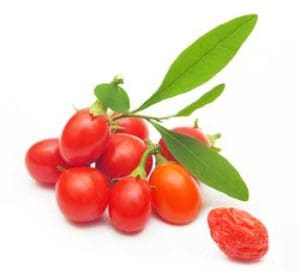
These bright orange-red berries, also known as wolfberries, are said to be the key to the fountain of youth. Some studies have shown drinking goji berry juice could improve one’s mental health, athleticism, happiness and quality of sleep.
Barley
Everyone touts brown rice, but what about its lesser-known cousin, barley? This complex carb not only lowers cholesterol and blood pressure in people who suffer from high cholesterol, it also contains eight times the amount of fiber as brown rice, which helps keep appetites in check longer.
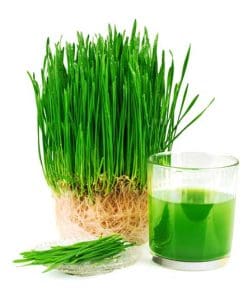
The powers of wheatgrass are nothing short of remarkable. Just two ounces have the same nutritional value as five pounds of the best raw organic vegetables.
Need more vitamin A? Wheatgrass has twice the amount as carrots. And as for vitamin C, which is popular during flu season, wheatgrass is king, putting oranges to shame.
It also contains the full spectrum of B vitamins, as well as calcium, phosphorus, magnesium, amino acids, potassium, chlorophyll and protein.
Wheatgrass fans say its nutrient-rich content boosts immunity, kills harmful bacteria in the digestive system and treat common ailments such as anemia, diabetes, constipation, ulcerative colitis and joint pain.
SOURCES: “Seaweed: Miracle Vegetable From the Sea.” www.doctoroz.com/blog/mao-shing-ni-lac-dom-phd/seaweed-miracle-vegetable-sea; “Nutritional Content of Kefir.” www.kefir.net/nutritional-content-of-kefir/; “Goji Berries: Health Benefits and Side Effects.” www.webmd.com/balance/goji-berries-health-benefits-and-side-effects; “Benefits of Wheatgrass.” http://hippocratesinst.org/living-food/benefits-of-wheatgrass; www.webmd.com/vitamins-supplements/ingredientmono-799-barley.aspx?activeingredientid=799&activeingredientname=barley
Juicing vs. blending
Both juicing and blending have become popular. We’re not saying either way is bad, but here’s something to consider.
When juicing, you remove the insoluble fiber. While fiber is good for the body, it slows down the absorption of nutrients. With juicing, you extract 70 percent of the nutrition into your glass, and because there is no insoluble fiber, your body absorbs 100 percent of the nutrients, vitamins and minerals found in vegetables. Thus, juicing nourishes and restores our bodies at a cellular level
In addition, vegetables tend to taste milder when they’re juiced because juicers filter out the pulp, skin, seeds and stems.

